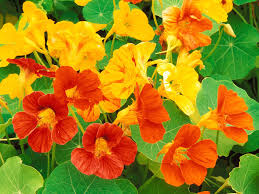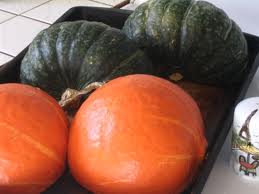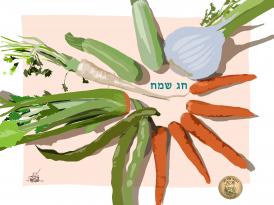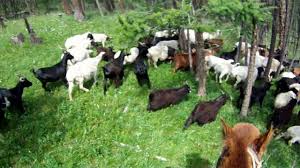Hi, Good week!
About two plants that are similar but different and are both in bloom this season.
Well, they are not really blooming right now, but their availability is in bloom. We usually prefer to eat the green leafy vegetables and roots before they flower, and eat the fruit after they flower. Remember that fruit, such as tomatoes, cucumbers, pumpkins, eggplant … are actually the product after the flowering 🙂
However, there are always exceptions – here are edible healthy flowers- now blooming in abundance;
Nasturtium, both pretty, tasty and healthy … what more could you ask for?
So those plants that I am writing about today are not really booming right now, they just grow really well this season. It is a sign that the winter dormancy has ended and that we should eat them now !!! Simply because, if they look and smell so good, it indicates that this season is good for us to eat them!
Both GARLIC-CHIVES and MINT instantly upgrade any salad. Both are good fresh or cooked. Both are aromatic and repel pests and, other than weeding and watering, they practically grow on their own. Both are known for their healing properties, both are multi-year in the garden, and now they are both so beautiful and yet come from completely different families.
Please welcome the garlic-chives and the mint that are both so beautiful in the garden now:
Part I: garlic-chives:

Garlic chives have a flat leaf like leeks and garlic, unlike the onion chives that have cylindrical leaves like green onions.
All of the above are members of the garlic family. Garlic chives are known to have all of the healing properties of garlic. However, the taste is more delicate and the green and fresh look give it many more uses.
There are records that the Chinese first used garlic chives about 5000 years ago. Also today they are found in Asian kitchens and are widely used in sautes, sushi, seasonings, soups, garnishments. Chives are used similar to green garlic or leeks.
In most cultures, garlic, and garlic chives, are recognized to ward off diseases (this is also backed by current research) and also to repel demons and evil. Unlike dry garlic, the chives should be eaten right away and not hang on the wall or at the door! The Gypsies, who also might have spread the chives, using it in fortune-telling.
It is told that Marco Polo brought chives from China to Europe but researchers say that it originated in England and was spread by soldiers of the Roman Empire. Dioschorides, a Greek physician, pharmacist and botanist from the period of emperor Nero, wrote a book on botany and medicine that was used and considered authoritative until a few centuries ago!! He wrote about the chives back then.
Emperor Nero, who was emperor at the time of the Great Jewish Revolt, apparently really wanted to be a singer. Nero is known by the numerous scandals at the time – he was born to a poor home, became emperor, employed 500 “professional clappers” to be his audience, watched the huge fire in Rome raging for a week while he was playing and singing on top of a mountain … and claimed that eating leek soup every morning made his voice clearer. The disk burning software NERO is named after him….
The leek is really the big sister of the garlic chives. They develop quite the same way. The leek is simply big and the chives are small, and both are more delicate than the garlic.
Garlic chives are known to fight intestinal parasites, are rich in flavanols like the rest of the family that are known to prevent growths, are rich in sulfur that has antibiotic qualities and a pungent smell, although they are more subtle. The Allicin in it inhibits the development of various cancers, helps in lowering blood pressure and cholesterol and improves the health of nails, teeth and skin. They are also rich in calcium, potassium and vitamins A and C.
They also make an omelet look fabulous.
I will write about mint next week.
Have a healthy, flourishing and happy week!
Yours,
Maggie and the garden staff
I expect in our weekly baskets together with Garlic Chives (draft only) :
Garlic Chives
Leeks
Kohlrabi
Green Curly Lettuce
Celery leaves
Artichokes
Cucumbers
Tomatoes
Dark and yellow zucchini 🙂
Larger ones also:
Fennel
Napolitus
And avocado
Fruit baskets :
Melons 2 types
Oranges
sweeties
Larger ones also:
Peaches
And more Oranges- end of season so we need them:)












